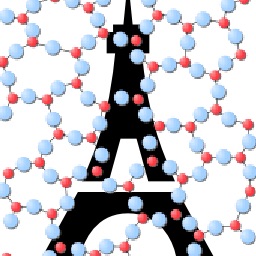Topological Origin of the Network Dilation Anomaly in Ion-Exchanged Glasses
Ion exchange is commonly used to strengthen oxide glasses. However, the resulting stuffed glasses usually do not reach the molar volume of as-melted glasses of similar composition—a phenomenon known as the network dilation anomaly. This behavior seriously limits the potential for the chemical strengthening of glasses and its origin remains one of the mysteries of glass science. Here, based on molecular dynamics simulations of sodium silicate glasses coupled with topological constraint theory, we show that the topology of the atomic network controls the extent of ion-exchange-induced dilation. We demonstrate that isostatic glasses do not show any network dilation anomaly. This is found to arise from the combined absence of floppy modes of deformation and internal eigenstress in isostatic atomic networks.
